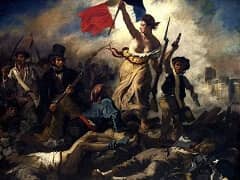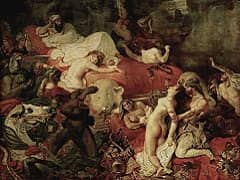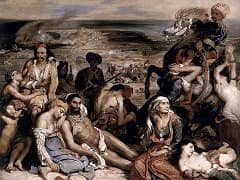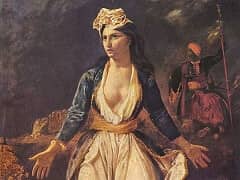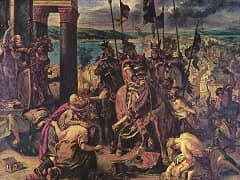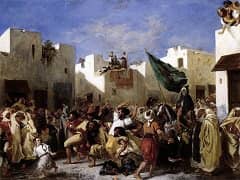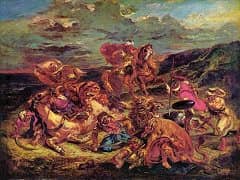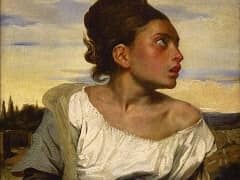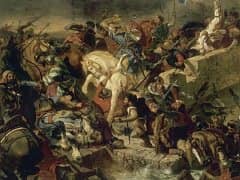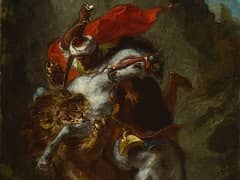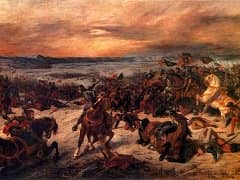Combat of the Giaour and the Pasha by Eugene Delacroix
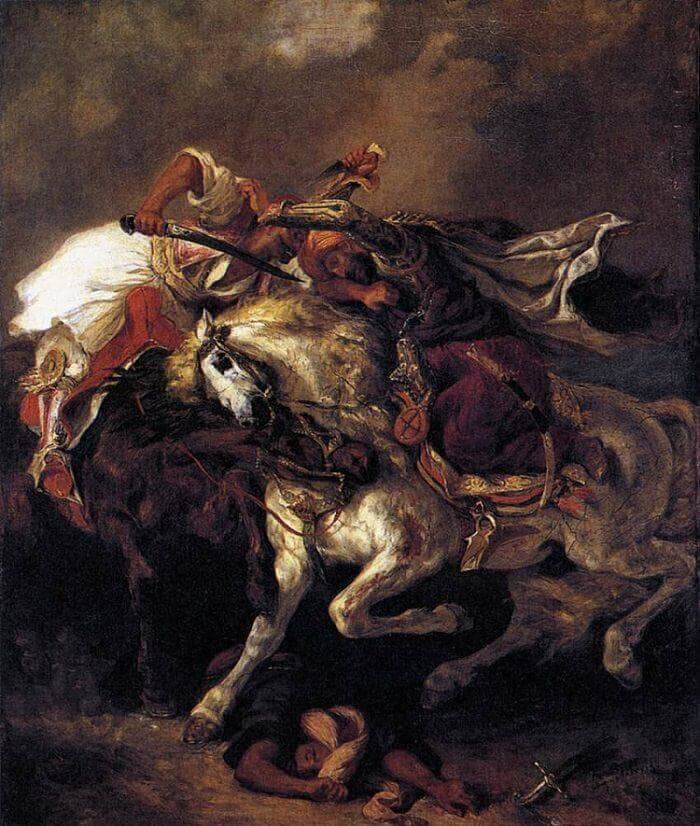
Between the fall of 1848 and the spring of 1850, Delacroix did five studies of flowers, in oil, and very probably this large watercolor. The fact that he turned to nature for his inspiration, without including a theme, is rare enough to warrant stressing. He wrote on February 6, 1849, to Constant Dutilleux:
You are good enough to mention the flower pictures that I am completing. Without definite design, I have proceeded in exactly the opposite fashion of the two works in question and I have subordinated the details to the ensemble as much as possible. I also wanted to get a bit away from the sort of cliche which seems to condemn all flower painters to be the same vase with the same columns or the same fantastic draperies to act as background or contrast. I have tried to do some pieces of nature as they appear in gardens, only bringing together within the same frame and in a somewhat plausible manner the greatest possible variety of flowers . . ."
This work belonged to Paul Cezanne, who greatly admired it and toward 1900 made an oil copy of it. This interest is revealing, for Cezanne, who can be considered one of the greatest of still life painters, recognized the innovative elements in this masterpiece by Delacroix. He saw in it the daring of an unconventional composition, as well as a palette of incomparable richness, "the most beautiful palette in France," to use his own words. While each flower is analyzed as by a botanist - something which Odilon Redon will later also do in his watercolors or pastels - Delacroix is not satisfied with this strict naturalistic observation and "rethinks" each element within an overall vision, an evocation of a sort of ideal garden, in which all the species might be profusely represented in a cunningly ordered disorder. The intensity of the red of the geraniums, notably, will decisively influence Cezanne, who in his turn will later paint several pots of geraniums, and one might quote here the reverse of his famous saying: "Form is in its fullness, because color is in its richness."

